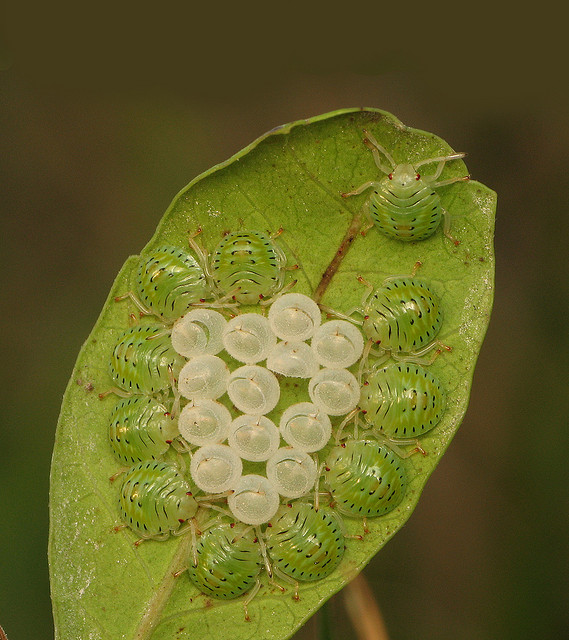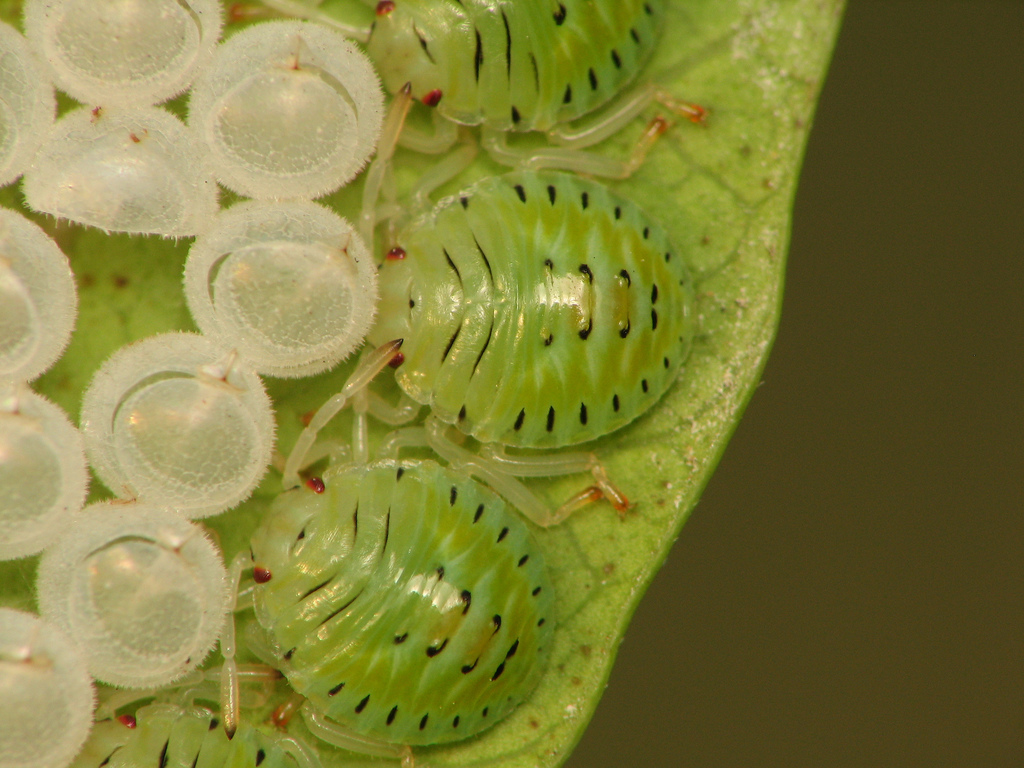By Nicole McKenzie, PMRA
Growing up is a continuous lesson in assessing risks.
In my case, those risks included going for a double salchow with the risk of taking a bad fall, pushing my limits on my bike with the risk of an accident around every corner, or choosing an insect-filled educational path that was once considered risky for girls and women.
But with these risks come opportunities, and learning which risks are worth taking, and which are best avoided, is a critical lesson we all learn through experience and opportunity. Luckily for me, I survived the risks I took, and the lessons they taught me prepared me for a job that I love.
For the last decade, I have been an Evaluation Officer with the Pest Management Regulatory Agency (PMRA), the pesticide-regulating wing of Health Canada.
In an effort to join the #scicomm science communication revolution, I want to do a better job of explaining what I do.
 No, I don’t pop a wheelie on ice while wrangling bees in a forest, but I do work that is almost as interesting. I said *almost*.
No, I don’t pop a wheelie on ice while wrangling bees in a forest, but I do work that is almost as interesting. I said *almost*.
What DO you do, then?
I deal with pollinators of the insect kind. I look at how pesticides affect bees that collect and move pollen from male and female flower parts. This process is called pollination and it helps to produce fruit like apples. Pollinators are vital to not only Canada, but to the entire world’s food supply. I assess pollinator pesticide risk, which means I analyze research from some Entomology Society of Canada members as well as the greater pollinator community. With a team of scientists, I dissect the data from research studies and organize it around a risk assessment framework. The framework holds up the data so the team can see ALL of the highs and lows of the risk.
From here we can step back and take in the whole risk picture gallery.

From the picture emerges a Pollinator Risk Management Plan that can be put in place to help safeguard our bees and food.
The Bikes and the Bees
Every day, we take what are deemed acceptable risks like driving a car at high speeds, and we try to prevent unacceptable risks like contracting measles that could affect our families and ourselves.
Deciding which risk is worth taking can be overwhelming. My risk assessing jam is The Risk Song by Risk Bites. It both winds my gears and chills me out.
Our method to assess risk is a lot like grinding through bike gears from smallest to largest. A better way of explaining this is by writing about going for a bike ride. But not just any bike ride, a big one like a Century Bike Race where you ride 100 km in one day, something I hope to accomplish this summer.
A Century Bike Race is risky, but like anything, it can be assessed and a plan developed to manage the risk.
 To assess the risk, I first completed 3 tests as I trained on my bike. Like steps, each test relied on the one before to gather information on the risks.
To assess the risk, I first completed 3 tests as I trained on my bike. Like steps, each test relied on the one before to gather information on the risks.
The stepped tests (or tiers as we call them in the risk assessment world) start very basic and move toward a more realistic set-up closer to mimicking the actual bike race. At each step, if an effect was seen (or a risk identified) another test was completed.
Effect information:
Tier 1: Basic bike riding skills
- TEST: Emergency stop or trying-to-stop-quickly-from-a-fast-speed.
- EFFECT = Falling over. This might be the fastest (unintentional) way to end my race.
Tier 2: Group riding skills
- TEST: Riding with the flow in a group of cyclists with bikes in front, behind and on both sides.
- EFFECT = I wobble side to side as I ride. No one wants to ride beside that.
Tier 3: Bike racing skills
- TEST: Entering some shorter bike races.
- EFFECT = I have never done a bike race before. *NOTE: I have competed in short distance triathlons, but ask any roadie about how these don’t count*. Bike racing seems a little like running with bulls, except with extra metal, spokes and wheel parts. Ouch.
Exposure Information:
It’s not enough to list effects seen from my bike race “tests”; I need to know about the race. I need to know details about what I could be exposed to during the race. This could include the road conditions, the type of race, the timing of the race and so much more.
Risk Assessment = Effects + Exposure
Using a framework, I compared the effects seen in the 3 tiered tests to what I expect to be exposed to during my bike race, and came up with this Risk Management Plan:
| TEST TYPE | RACE EXPOSURE INFORMATION | RISK IDENTIFIED | MANAGEMENT STEPS |
| Tier 1
Basic bike riding skills |
|
Falling off bike |
|
| Tier 2
Group riding skills |
Wobbling as I ride |
|
|
| Tier 3
Bike racing skills |
I have never done a bike race before |
|
If my bike analogy is still lost on you, connect with me on Twitter and I’ll try comparing it to landing a double axel instead. In the meantime, here’s a handy interactive infographic to explain the risk assessment process using caffeine as an example.
The Bees and the Bikes
Assessing pesticide risk to pollinators is similar to assessing bike race risk. There are of course different pollinator tests for each of the 3 tiers and different exposure details needed for plants and pesticides but the process is the same. Each tier gets more specific and more realistic to what and how a pollinator could react when encountering a pesticide in the environment. Here is how a general pollinator risk assessment works starting with the tiered tests:
Effect information examples:
Tier 1: Individual bee effects
- TESTS:
- Observe individual bees after they are fed pesticides mixed with sugar
- Observe individual bees after a pesticide drop is placed on their back
Tier 2: Semi-field effects
- TESTS:
- Observe bee colonies that are placed under tents with pesticide treated plants
- Observe bee colonies that are fed pesticides mixed with sugar and/or pollen
Tier 3: Full-field effects
- TEST: Observe bee colonies that are placed in fields of pesticide treated plants
Exposure information examples:
-
- The type of pesticide and how it works
- The plants that are to be treated with the pesticide
- The timing of the pesticide applications and when the plants bloom
- If pollinators are found on or attracted to the treated plants
- The amount of pesticide found in the plant parts that pollinators may feed on or touch
Risk Assessment = Effects + Exposure
Just like with my bike race we use a framework to compare the effects with the exposure information but there is more to consider that can complicate the process.
We also strive to understand the natural history of pollinators and the way crops are grown and harvested in Canada. This crucial information is then overlaid on the exposure information and the effects seen. This melding together of ALL the collected information results in, you guessed it, a Pollinator Risk Management Plan.
Example of Pollinator Pesticide Risk Management Plan Steps
Some management steps that crop up in plans I’ve helped put together include:
- Not allowing pesticides to be applied to any plant while it flowers
- Reducing the amount of pesticide applied to a level below where the risk lies
- Changing the timing of a pesticide application from before to after flowering
- Eliminating the use or method of a pesticide application
Risky Buzz-i-ness keeps me busy
Working with pollinators has taught me that nothing is as straightforward as it seems. The science changes all the time, as do the risks as we learn more about bees, their behaviour, and how plants are grown in Canada.
There is one thing I do rely on, and that is how pollinator work is NEVER boring.
If you want more information about the pollinator risk assessment process… or to give me bike race tips here’s some links:







